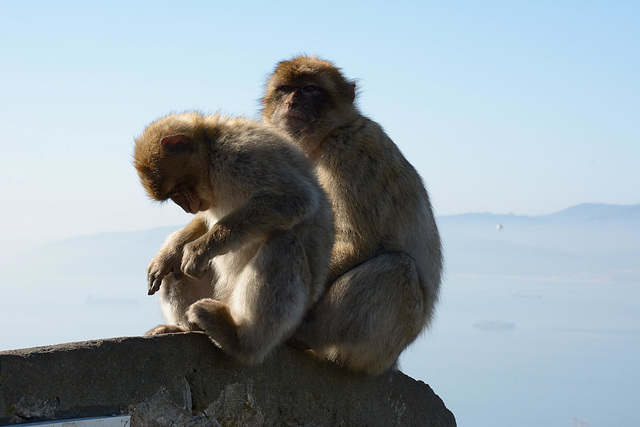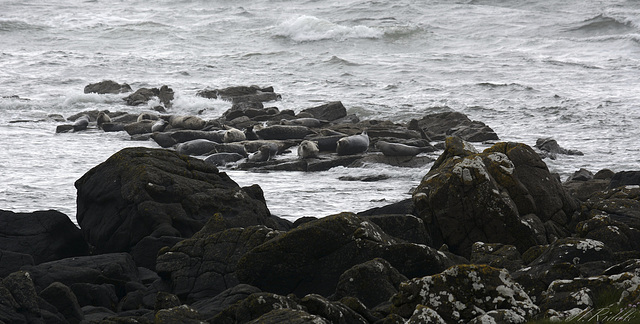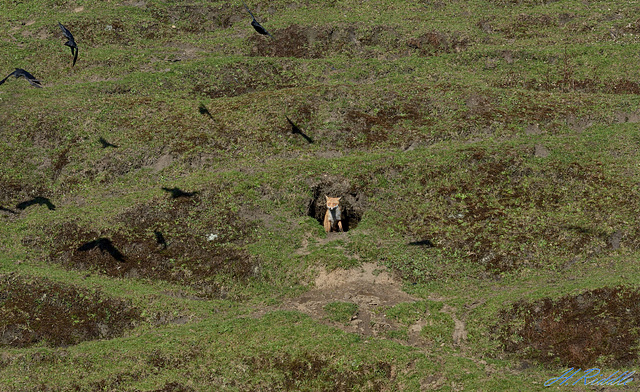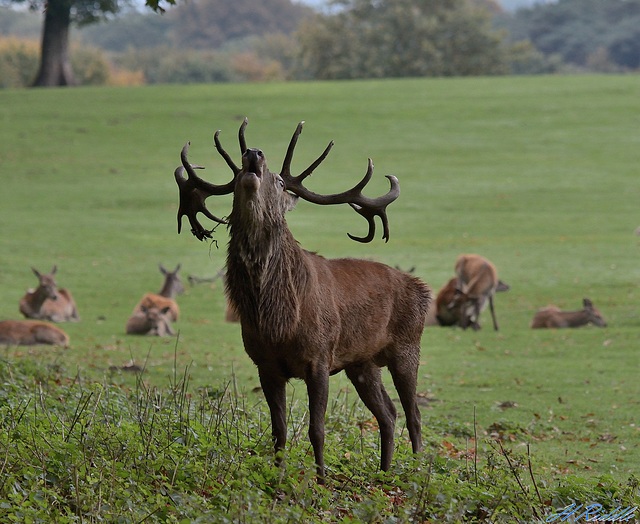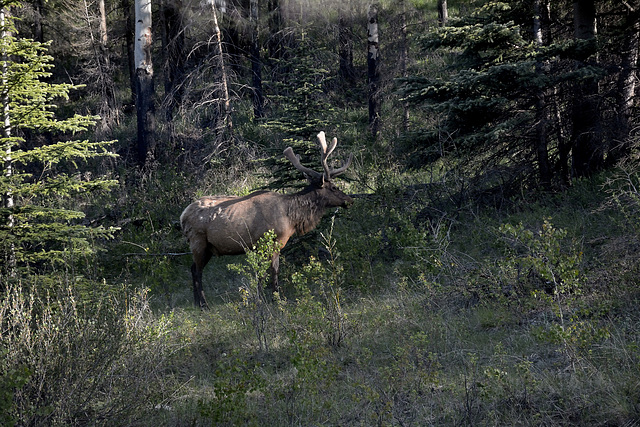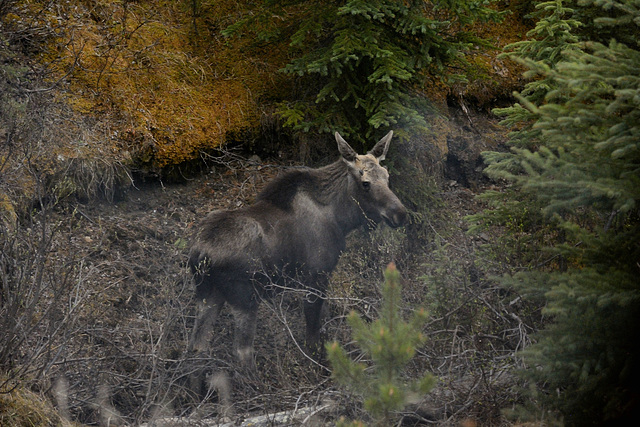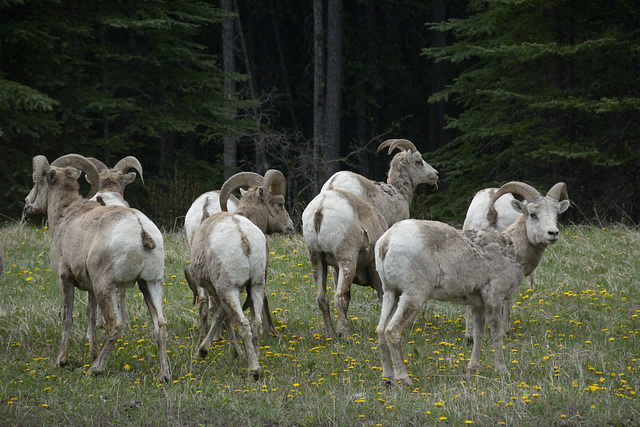
Wildlife
18 Jan 2017
3 favorites
2 comments
Grand Cayman, Blue Iguana
Seen on Grand Cayman Island, high in a tree at the tiny tourist spot of 'Hell' :)
19 Dec 2015
1 favorite
2 comments
The Barbary macaques of Gibraltar, monkeying about!
Anyone getting near the top of the Rock of Gibraltar will have seen these lively interesting Macaque monkeys. Here are just two of the many but watch out - your camera or lens could go missing very quickly with these about. Taken near the top of the rock looking west.
16 May 2017
6 favorites
2 comments
The Seals of Kildonan
Here on Arran just out from the village of Kildonan on Arrans South East coast is a rocky shoreline that is home to these common seals. I took this just as the tide was rising yet further forcing these seals to go swimming.
Mrs Fox, guards the den
At home we see one or two urban foxes and so it was with surprise that I spied this one high on the side of a hill keeping a lookout of the crows at this very obvious den. A few moments later she hopped out and was on her way back out of this large valley towards the nearby urban sprawl on the hunt for food no doubt. My lens and closeups of her revealed that she probably had pups in here. The nearby crows were also showing interest here as can be seen.
15 Oct 2018
40 favorites
58 comments
Bellowing red deer at Rutting time.
Red Deer Rut at Tatton Park, Cheshire
The sound of a red deer stag bellowing is both unmistakeable and unforgettable. At this time of year stags are battling to show their dominance to gather together a harem of females.
As always, beautiful at full screen. See pip
18 May 2016
25 favorites
31 comments
Animals of the Canadian Rockies: Grizzly Bear
Taken from our stopped bus, as our driver screeched to a stop on seeing this near Lake Louse.
We knew we were lucky seeing this. It was about 100m from our road, moving by a river. The bus was stopped and I managed to get this through a open window but trees and foilage marred the view somewhat via this long 270mm (400mm equivalent) lens. I was pretty happy with this capture though as my fellow bus riders got nothing like this. Of course our driver had his hand on the ignition and foot near the accelerator in case it crossed the river and ran towards us :)
"Grizzly bears (Ursus arctos horribilis) have concave faces, a distinctive hump on their shoulders, and long claws about two to four inches long. Both the hump and the claws are traits associated with a grizzly bear’s exceptional digging ability. Grizzlies are often dark brown, but can vary from very light cream to black. The long guard hairs on their backs and shoulders frequently have white tips and give the bears a "grizzled" appearance, hence the name "grizzly." The correct scientific name for the species is “brown bear,” but only coastal bears in Alaska and Canada are referred to as such, while inland bears and those found in the lower 48 states are called grizzly bears." - defenders.org
16 May 2016
9 favorites
9 comments
Animals of the Canadian Rockies: Elk
Another taken from our moving bus near Johnson Canyon.
'The elk or wapiti is one of the largest species within the deer family, Cervidae, and one of the largest terrestrial mammals in North America and Northeast Asia. This animal should not be confused with the still larger moose to which the name "elk" applies in British English and in reference to populations in Eurasia.' Wikipedia
18 May 2016
9 favorites
6 comments
Animals of the Canadian Rockies: Moose
I think this is a cow moose as the male bull moose has big antlers. Maybe a young one though?
Not far from our road. Our driver who was once a park warden here, chastised a car driver here, who had stopped his car just next to our bus and was creeping ever closer to the animal with his camera, quite unaware it seems just how dangerous these wild animals could be.
'The animal Alces alces, called the moose in North America and the elk in Europe is the largest of all the deer family Cervidae, distinguished from other members of Cervidae by the form of the antlers of its males.'
Jump to top
RSS feed- Latest items - Subscribe to the latest items added to this album
- ipernity © 2007-2024
- Help & Contact
|
Club news
|
About ipernity
|
History |
ipernity Club & Prices |
Guide of good conduct
Donate | Group guidelines | Privacy policy | Terms of use | Statutes | In memoria -
Facebook
Twitter



